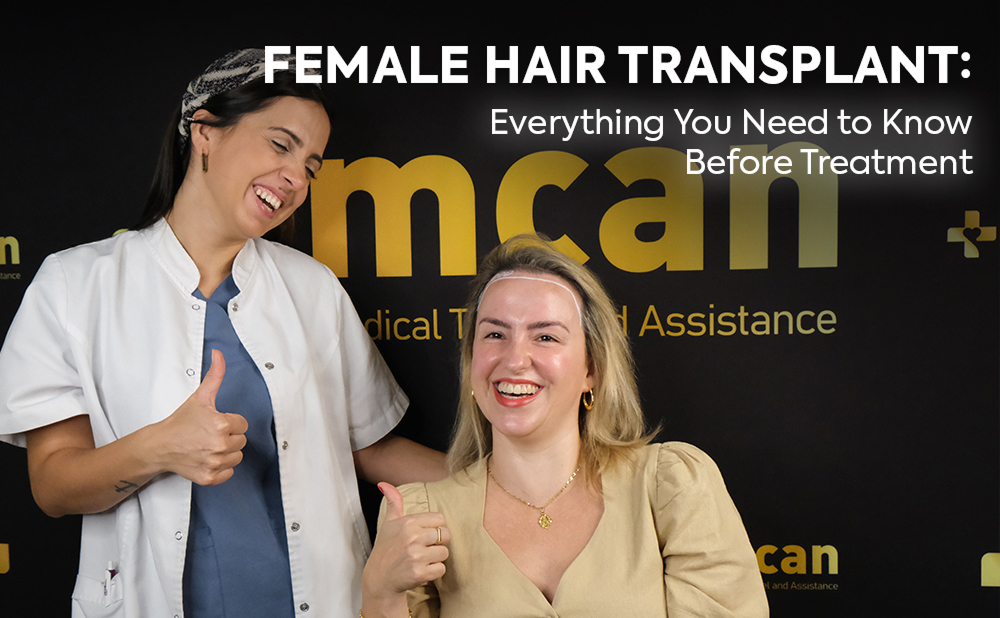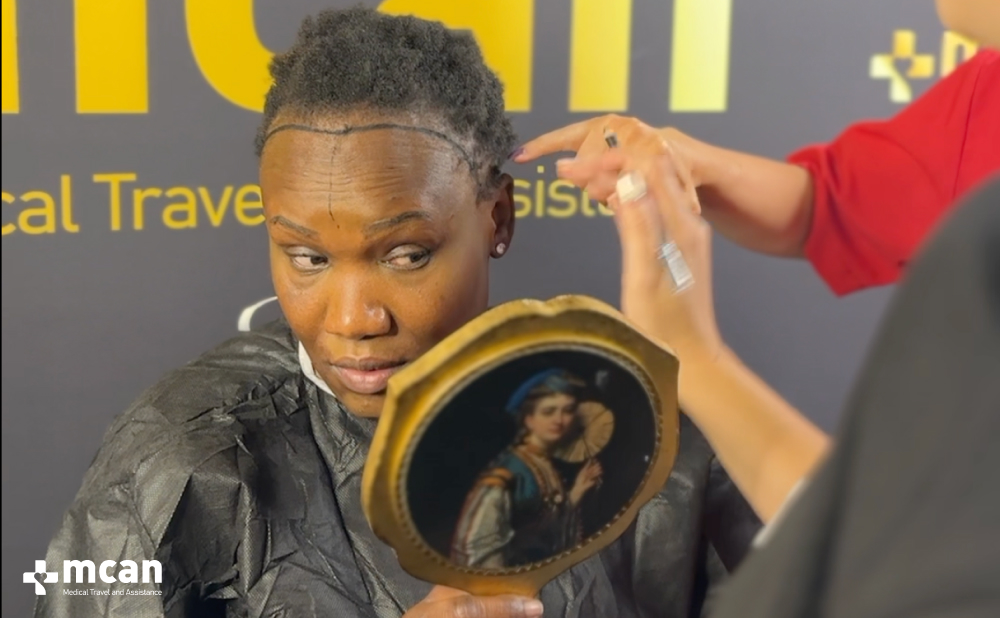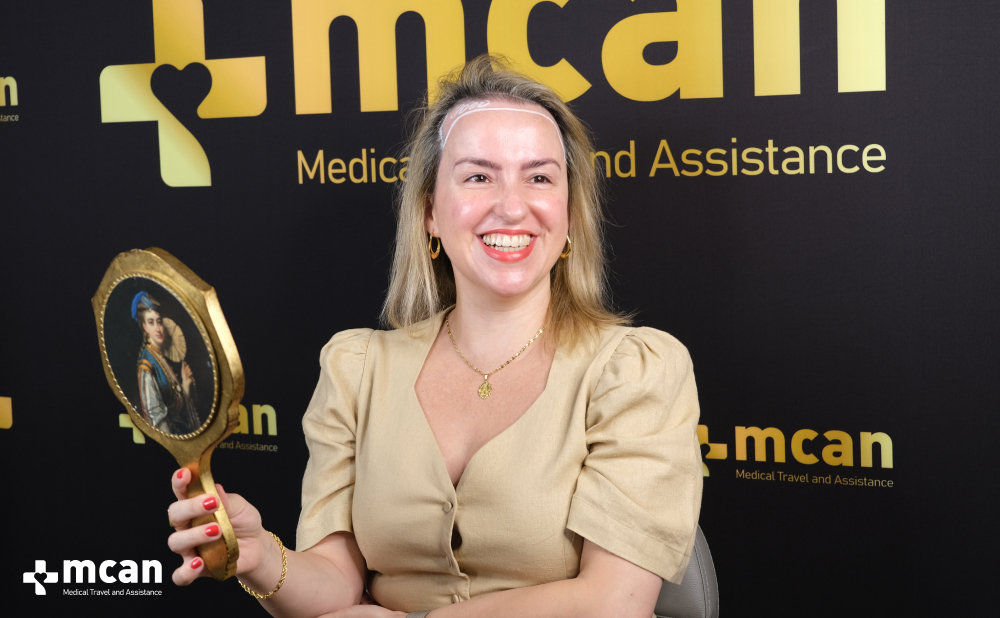
Hair loss in women is more than just a cosmetic issue, it can deeply affect confidence, identity, and everyday well-being. Yet, the causes behind it are often complex, ranging from hormonal imbalances to genetic predispositions or emotional stress. If you’re struggling with thinning hair or visible scalp areas, you’re not alone. And more importantly, there are personalized, medically sound solutions available.
A female hair transplant is one of the most effective long-term treatments for restoring natural volume and reshaping the hairline in a way that’s both subtle and empowering. But the path to lasting results starts with knowledge.
In this comprehensive guide, we’ll walk you through the root causes of female hair loss, explain how it differs from male pattern baldness, and explore who makes an ideal candidate for treatment. You’ll also find essential information on preparation, recovery, and what to expect when choosing a clinic, especially if you’re considering a female hair transplant in Turkey, where advanced techniques and patient-centered care combine for world-class results.
What is Female Hair Loss?
Female hair loss refers to the progressive thinning or shedding of hair on the scalp, and it’s more common than many people realize. Unlike male hair loss, which often presents with a receding hairline or bald spots, women typically experience diffuse thinning across the crown and top of the scalp.
There are several forms of hair loss in women, the most common being:
- Female Pattern Hair Loss (FPHL): A genetic condition marked by gradual thinning over time, particularly at the part line or crown.
- Telogen Effluvium: Often triggered by physical or emotional stress, this type of temporary hair loss results in excessive shedding.
- Alopecia Areata: An autoimmune condition causing patchy hair loss that can progress quickly or remain localized.

Why Does Female Hair Loss Happen?

Female hair loss is rarely straightforward. It can arise from a complex interplay of biological, hormonal, and environmental factors. For many women, the emotional impact can be as distressing as the physical changes.
Here’s a closer look at the most common causes we encounter in clinical practice:
- Genetic Predisposition (FPHL): Female Pattern Hair Loss is the most common form, often inherited and progressive. Unlike men, women typically don’t go bald, but they do experience thinning, especially around the part line or crown. If hair loss runs in your family, chances are, you’re genetically predisposed.
- Hormonal Disruptions: Female hair is highly responsive to hormonal shifts. Life stages such as pregnancy, perimenopause, and menopause can trigger significant shedding due to fluctuations in estrogen, progesterone, and androgens. Thyroid dysfunction is another often-overlooked culprit that can destabilize the hair cycle.
- Stress-Induced Shedding (Telogen Effluvium): Both emotional and physical stress, major illness, surgery, or even intense dieting, can push hair follicles into the telogen (resting) phase. This leads to diffuse shedding that typically becomes noticeable a few months after the stress event. Though usually temporary, it can be alarming without proper guidance.
- Underlying Health Conditions: Hair loss can be a visible symptom of deeper systemic issues. Conditions like polycystic ovary syndrome (PCOS), iron-deficiency anemia, or autoimmune diseases such as lupus or alopecia areata require medical management, often in collaboration with other specialists.
- Medication Side Effects: Some prescription drugs, like antidepressants, beta-blockers, or chemotherapy agents, can interfere with the hair growth cycle. In such cases, we review patient history thoroughly to ensure safe, integrated care.
What Is the Difference Between Male and Female Hair Transplants?
While the core techniques, such as FUE and DHI, are similar, female hair transplants require a more individualized approach. This is due to fundamental differences in hair loss patterns, aesthetic goals, donor hair distribution, and the underlying causes of hair thinning.
The table below highlights the key distinctions:
| Aspect | Male Hair Transplant | Female Hair Transplant |
|---|---|---|
| Hair Loss Pattern | Typically receding hairline or crown baldness (M-shaped) | Diffuse thinning across the scalp; part-line widening |
| Hairline Design | Often reconstructing a higher, more defined hairline | Aims for a lower, softer, and more natural frame to the face |
| Donor Area Stability | Usually stable at the back and sides of the scalp | May be compromised due to diffuse thinning, requiring more strategic harvesting |
| Shaving Requirement | Full shaving often necessary | Partial or no-shave options to preserve existing hairstyle and privacy |
| Hormonal Influence | Less commonly a factor | Frequently influenced by hormones (e.g., thyroid imbalances, pregnancy, menopause) |
| Treatment Planning | Often straightforward based on visible baldness | Requires a holistic approach, including medical evaluation for hormonal or systemic causes |
Is a Female Hair Transplant Right for You?
Deciding whether a hair transplant is the right choice involves more than just noticing thinning. Let’s explore who benefits most and dispel some common myths that might be holding you back.
Who Makes a Good Candidate?
- Women with stable hair loss patterns, such as FPHL (female pattern hair loss), can be great candidates, especially if the hair loss hasn’t been drastic or sudden.
- Those with healthy donor areas, typically at the back of the scalp, are ideal for reliable graft harvesting.
- If you’ve already tried non-surgical treatments like topical solutions without sufficient results, hair transplant for women may provide the long-term results you’re looking for.
Common Misconceptions About Suitability
- “I’m too young or too old.” Age isn’t a barrier; suitability depends more on hair loss pattern and donor health rather than a specific age range.
- “I have diffuse thinning, not bald spots.” While transplanting diffuse thinning can be more complex, combining it with medical treatments often delivers excellent coverage.
- “Only men get natural results.” With refined techniques tailored to women (like careful hairline design and angle placement), results can be indistinguishable from natural growth.
If you’re unsure, a thorough evaluation including medical history, scalp health, and expectations is the best way to determine whether transplant surgery is the right fit for your goals.
Preparing for Your Hair Transplant Journey
Planning a female hair transplant involves more than just choosing a date. A successful outcome starts with the right preparation, from your initial consultation to the days leading up to the procedure.
During the consultation, your doctor will evaluate your hair loss pattern, examine the donor area, review your medical history, and discuss your expectations. Photos may be taken for treatment planning, and this is your opportunity to ask any questions about the technique, timeline, or results.
In the days before your procedure, you may be asked to stop taking certain medications, avoid alcohol and smoking, and wash your hair using a special shampoo. Getting good sleep and eating light the night before are also advised. These steps help reduce risk and support a smooth, effective recovery.
To see what this preparation and journey look like in real life, watch the video below of Luciana’s Hair Transplant Turkey Journey in Istanbul, where she shares her experience from consultation to recovery:
For a detailed look at the step-by-step recovery process and growth timeline, check out “Hair Transplant Timeline: A Guide to Hair Transplant Recovery & Growth Chart”.
Do I Need to Shave My Head for a Female Hair Transplant?

This is one of the most common questions women ask before committing to a hair transplant for women. Unlike male patients, most women don’t need to shave their entire head for the procedure. Instead, only a small section of the donor area; usually at the back of the head, is trimmed discreetly.
This approach, often called a “no-shave” or “partial-shave” technique, allows women to maintain their existing hairstyle and go through recovery without noticeable changes. It’s a key reason why hair transplants have become more accessible and appealing to female patients.
We often use no-shave or partial-shave techniques and you can learn more about this approach in our blog post “Unshaven Hair Transplant: Is It Possible to Perform Hair Transplant Without Shaving?”.
Healing After Female Hair Transplant
Recovery after a female hair transplant is usually smooth and straightforward, especially when aftercare instructions are followed carefully as part of a female hair restoration journey. Mild swelling, redness, or sensitivity in the treated area is normal during the first few days. Most patients can return to non-strenuous activities within a few days, though it’s important to avoid hair washing and direct sun exposure initially.
Scabbing will form and naturally fall off within the first two weeks. By the end of the first month, transplanted hairs may shed. This is a normal part of the growth cycle, not a cause for concern. New hair typically starts to grow around the third month, with noticeable improvement by month six and full results around 12 to 18 months.
To support long-term hair health, patients are often advised to avoid harsh styling, limit heat exposure, and follow any recommended treatments like PRP or supplements. Maintaining overall wellness, including balanced hormones and stress management, can also contribute to lasting results.
Choosing the Right Clinic for Your Female Hair Transplant in Turkey

A successful female hair transplant isn’t just about the surgery; it’s about choosing a clinic that understands the unique needs of women and supports them every step of the way. From the first consultation to long-term aftercare, the right team will recognize the emotional and medical nuances of female hair loss.
For expert insight into the technical and aesthetic factors that define transplant quality, don’t miss our in-depth article “Hair Transplant Success: The Key Elements Behind a Great Result”.
At MCAN Health, we bring deep expertise in female hair transplant in Turkey, combining advanced surgical techniques with holistic patient care. Our team has extensive experience treating women with diffuse thinning, hormonal imbalances, and complex donor areas, challenges that require skill, precision, and sensitivity.
With 24/7 in-house nursing support, multilingual patient hosts, and internationally accredited facilities, we ensure your experience is as smooth and empowering as your results are transformative.
When you choose MCAN Health, you’re not just choosing a clinic. You’re choosing confidence, clarity, and care that continues long after your procedure.
Frequently Asked Questions About Female Hair Transplant
How is female hair loss diagnosed before considering a transplant?
Before recommending a hair transplant, a thorough medical evaluation is conducted. This includes blood tests, scalp analysis, and a review of medical history to rule out conditions like thyroid disorders, hormonal imbalances, or nutritional deficiencies that could be contributing to hair loss.
Are female hair transplants more complex than male procedures?
While the techniques may be similar, female hair transplants require greater customization. The patterns of hair loss, aesthetic goals, and preservation of existing hair all play a role.
Is the donor hair quality different in women compared to men?
In many women, hair thinning can be more diffuse, even in the donor zone. That’s why donor area assessment is critical in female patients.
Will hormonal issues affect the transplant results?
Absolutely. Hormonal fluctuations, such as those from PCOS, menopause, or thyroid dysfunction, can continue to impact native hair growth even after a transplant.
What kind of post-transplant care is necessary for women?
Post-operative care includes gentle scalp care, prescribed medications, and lifestyle guidance. At MCAN Health, every patient receives a personalized aftercare plan and 24/7 nurse support, ensuring optimal healing and hair growth.
Can I color or chemically treat my hair after a female hair transplant?
Yes, but timing is important. You’ll need to wait at least 4 to 6 weeks after your transplant before applying hair dye or undergoing any chemical treatments. This gives your scalp time to fully heal and reduces the risk of irritation or complications.
 Best Age for Hair Transplant: When Should You Consider the Procedure?
Best Age for Hair Transplant: When Should You Consider the Procedure?  Mesotherapy for Hair: A Practical Treatment
Mesotherapy for Hair: A Practical Treatment  5 Signs You Are Ready for a Hair Transplant: What to Look For
5 Signs You Are Ready for a Hair Transplant: What to Look For